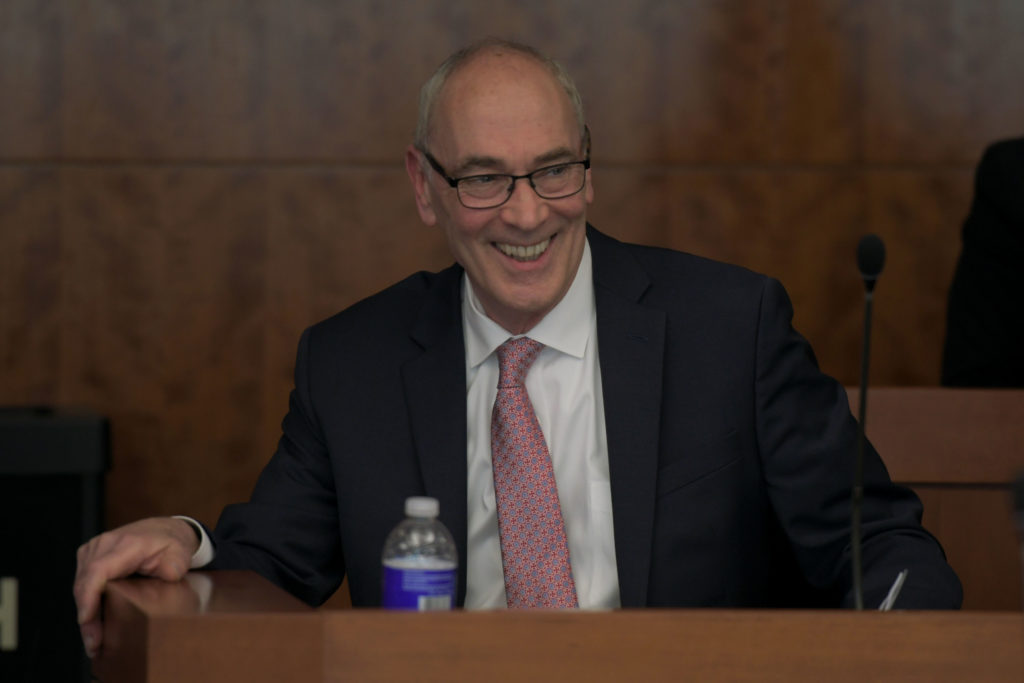Federal grants, which dominate the University’s overall research funding, have grown by nearly 50 percent in the medical school over the past five years.
Medical school officials said federal research funding has increased by 49 percent over the past half-decade, compared to a 39 percent increase in non-federal grants over the same period. Faculty said researchers who are pursuing larger-scale projects often turn to federal agencies for money if they think smaller, private entities will not be able to provide the funds.
The University currently receives the majority of its overall research funding from federal entities like the National Institutes of Health – comprising more than 80 percent of GW’s research funding in fiscal year 2018, according to the annual research report.
The medical school brought in more than $23.7 million from NIH in 2018 – up from the $16.9 million it received in 2014, according to an NIH database. The medical school’s funding from the institutes hit $20 million in 2012.
Robert Miller, the vice president for research, said “a number” of University offices assist researchers in finding and applying for grant opportunities. He said the Office of the Vice President for Research’s Office of Sponsored Projects can help investigators with funding searches and preparing “winning” proposals.
“Given the increasingly competitive nature of federal funding, researchers are wise to explore all available options for funding their research,” Miller said in an email. “Securing grants from federal and other funders often requires careful consideration and preparation.”
Miller said federal grants are more likely to award projects where some preliminary results have been generated that demonstrate “likely success.”
“Like all top-tier research universities, we strive to diversify our funding sources so that we don’t rely too heavily on one particular sector or funder for our research support,” he said.
Miller said developing relationships with other funders has several long-term benefits, like informing policy positions or providing a path for commercializing a discovery. He said researchers pursuing more preliminary projects, or projects with uncertain outcomes, may have more success with non-federal research funding.
Julia Cruz, a clinical instructor of medicine, said federal grants allow recipients to “explore broader topics,” and the funding agency itself does not try to influence the outcome of the research project. She said private grants usually fund projects about narrow topics, like a study on how the consumption of soft drinks is a constitution factor of obesity.
Cruz said conducting studies that are funded by companies with vested interests can compromise the validity of the research, like when tobacco companies funded lung cancer research during the 1970s and 1980s.
“The hanging shroud of impropriety follows the researchers for a long time,” Cruz said in an email.
Cruz added that many private foundations are “very broad and generous” with their grants and do not seek major influence over the outcome of the research. She said that for many privately funded grants, there is no communication between the investigators and the grant providers other than a yearly report of activities and an assessment of answers to the question under the study.
Cruz said as federal sources have decreased their budget for grants, new researchers have applied to more grants from foundations and private sources.
“Federal grants are very competitive,” she said. “A new researcher would rarely receive one of these on their initial application.”
Leo Chalupa, the former vice president for research and a professor of pharmacology and physiology, said the application and review process for federal grants tends to be more “transparent” than those of private funders, and researchers typically know who will serve on the review committee for each award.
Chalupa said federal money also tends to be allocated in greater amounts and is guaranteed for longer than those from private foundations. He said federal grants are also advantageous to the University as a whole because administrators negotiate an overhead rate, which dictates how much the federal government will pay back to GW to cover services like custodial staff, lab equipment and waste disposal. GW’s rate is about 60 percent, he said.
Officials said last year that the University has earned about $10 million more from the federal government since moving research projects to on-campus buildings six years ago.
But Chalupa said that even with the benefits of federal funding, faculty should still take funding from private entities because obtaining a grant is a difficult process under any circumstance.
“For the faculty member, money is money – any way that they can get money is a good thing,” he said. “Money from any source is more than welcome.”
Chalupa said there was a surge in federal funding after President Donald Trump took office even though the administration wanted to cut research funding. He said Congress bilaterally increased funding for government entities like the NIH, which boosted the number of awards allocated to researchers.
“The chances of a faculty member getting money is much greater than a few years ago,” he said.
Leah Potter contributed reporting.





